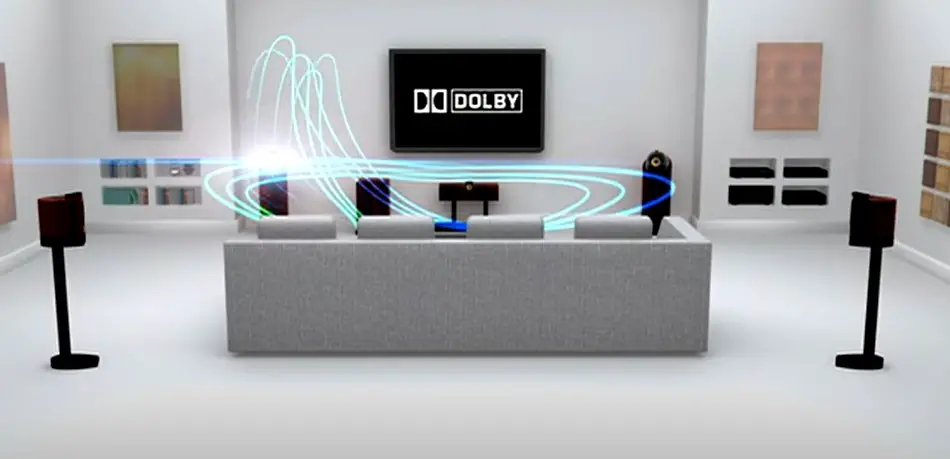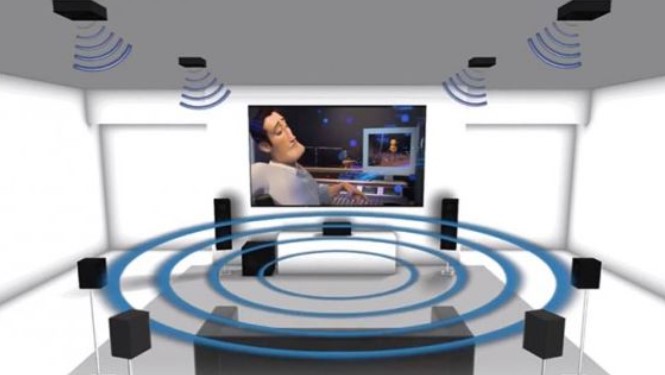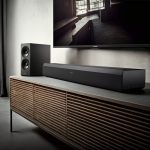If you’re looking for a new TV or Soundbars and come across specs that say that these support Dolby Digital or Dolby Atmos, you must know that you have come a long way since the beginning of theater and cinema! There have been a number of innovations and upgrades in theaters, home theaters, and cinemas, which includes the shift from mono and stereo sounds to surround sound.
Dolby Atmos and Dolby Digital is a revolutionary innovation of sound created by Dolby laboratories. It gives your home theater the most immersive surround sound effect, which would have you doubt it for reality.
Now, Dolby Digital and Dolby Atmos are different names, and you might want to know which one is better!
So, here we are! Let’s turn over a new leaf and learn about these revolutionary innovations.
The first Brick: Dolby Digital!
It was in 1986 that the first brick was laid in the form of Dolby Digital, as the historical revolution in the sound of home theater. This, along with Dolby Atmos, always slays the top of the chart regarding surround sound technology. Surround sound provides an immersive sound that envelopes the listener to give a sense of reality.

Dolby Digital produces immersive, cinematic surround sound codecs using 7.1, 5.1, and 6.1 setups. It’s done with the help of encoding and decoding technology. It delivers the enveloping surround sound effect through 5 discrete channels, which include Left, right, center, right surround, and left surround. There’s also a sixth additional channel or a subwoofer that delivers low-frequency range sounds.
Amazing, isn’t it?
Now, the question is, what can you use this audio codec for?
Simply put, any of your home theater equipment that supports this audio codec can work with this. However, this audio codec uses a data compression technique, which helps get rid of useless information, so it’s very beneficial for saving space in CDs, DVDs, and Blu-ray discs. More precisely, you can use it with laser Discs, DVD video discs, digital cable systems, direct broadcast satellites (DBS), and Digital broadcast TVs.
You might now think that if this innovation was enough, what was the need for Dolby Atmos?
The need for a better surround sound codec was raised because of the loss of sound experienced because of the compression technique of Dolby Digital. Some level of audio degradation can be heard or experienced in this sound codec.
Dolby Atmos: solving the puzzle!
Now, the name might sound fancy and of something quite complicated, when in reality, it’s something that made the home theater worthwhile. If you’re an audiophile and have an ear to recognize high-quality sounds, this is definitely the one for you. It expands your existing surround sound by an additional height audio channel, giving a 3D enveloping sound effect.

Instead of channels, Dolby Atmos produces sound in the form of objects and can produce up to 128 sound objects. Object-based audio refers to individually recorded audio files from different sources and instruments stored in the form of mono-sound audio files.
How is it different from traditional speakers?
Well, first of all, you can easily change and transform your already existing 5.1 and 7.1 channel sound setup into Dolby Atmos by adding some ceiling or upward-firing speakers. Furthermore, it assigns a special audio production task to each speaker in the setup; for instance, if someone is having a dialogue in the movie, you’ll hear that audio from the central speaker. Background music is covered by the front-positioned right and left speakers; surround speakers cover the swooping, zooming, etc
Not just this, Dolby Atmos DTS:X and True HD deliver sound in its original form, uncompressed and unchanged, which eliminates the chances of lossy or degraded sound.
Now that you know about these two impressive sound codecs, you might want to know which one is better and the difference between the two! So, roll up your sleeves for the little cold war between the two heroes of immersive sounds.
Dolby Digital VS Dolby Atmos: The cold war begins!
Dolby Digital and Dolby Atmos both do the same thing, producing immersive sounds, but they are slightly different from each other. Let’s hop in to find out about these differences.
1. Sound production
The Dolby Digital and Dolby Atmos might seem to produce the same surround sound; however, there is a slight difference between the sound output of the two. Dolby Digital is a speaker-based surround sound codec that channels the sound to the rear speaker, giving an illusion of surround sound.
In contrast, Dolby Atmos produces true surround sound by incorporating the height speakers to create virtual speakers within the room. It doesn’t push the sound to the speakers. Instead, it adjusts audio based on the position of an object on the screen, creating a truly 3D audio effect.
2. Speaker setting
The speaker arrangement of Dolby Digital and Dolby Atmos is different from each other. Dolby Digital uses a horizontal speaker arrangement, with all the speakers at the same level. The speaker setup for Dolby Digital includes central speakers, Front positioned right and left speakers, a subwoofer, and right and left surround speakers.
On the contrary, the Dolby Atmos brings height audio to the home theater. Alongside the horizontal speakers’ arrangement, two height channels or ceiling speakers help produce enveloping sound experience.
3. Audio compression
Dolby Digital uses an audio compression technique, compressing the audio files before sending them over the communication line. It saves space in laser discs and DVDs by eliminating useless information. However, this audio compression sometimes results in the degradation of sound.
On the other hand, Dolby Atmos doesn’t compress any file and sends the audio and video file in their original form, which creates a lossless audio effect in the home theater.
4. Channels
Dolby Digital offers 2.0 to 5.1 audio channels with horizontal or 2D speakers arrangement. Dolby Atmos provides 3.1.2 to 4.1.4 audio channels with horizontal and vertical speakers arrangement for 3D audio.
5. Receiver compatibility
You cannot have your Dolby Atmos setup without the two ceiling speakers and an Atmos-compatible receiver. Dolby Digital, however, can work even without these with the existing receiver.
Furthermore, you may also need an HDMI eARC connection to get the highly immersive Dolby Atmos sound with an HDMI 2.1 cable. The HDMI ARC will compress the files and send them as Dolby Digital.
6. Backward compatibility
Dolby Atmos needs a high bandwidth connection for audio, but it’s backward compatible. It means that you can get Dolby Atmos in the form of Dolby Digital if your receiver doesn’t support an eARC connection for complete signal transmission. The audio files will be compressed and sent in the form of Dolby Digital, which may sometimes give lossy sound.
However, Dolby Digital doesn’t do the same. You cannot get Dolby Atmos audio from a Dolby Digital connection.
To sum Up!
When talking about the better one in the Dolby Digital VS Dolby Atmos battle, without any doubt, Dolby Atmos is better and has a far more advanced audio codec. However, it is also quite pinching for the pocket, given that most media content is unavailable in this audio format.
It provides the most immersive 3D surround sound by producing sound objects, giving you a real-time cinematic watching experience. You might have to add additional speakers to your Atmos setup to make it sound better. Dolby Digital, on the other hand, only provides an illusion of 3D audio by channeling audio to the rear speaker. It doesn’t make much of a difference, but if you are an audiophile, you should definitely go for Dolby Atmos.

I’m Shaun Conroy, an audiophile & founder of HiFi Audios. Holding a Bachelor’s in Sound Engineering, I bring deep expertise in audio devices and offer insights & recommendations to fellow enthusiasts.





